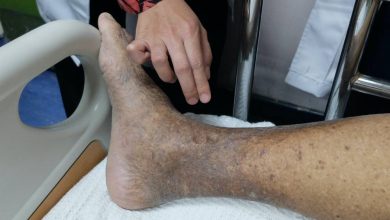Dry Macular Degeneration Symptoms, Causes, Diagnosis and Treatment

What Is Dry Macular Degeneration?
Macula is located at exactly the center of retina. It is basically the layer of RPE cells on the inner side of the back of an eyeball. These cells are fvery essential to eyesight because they are responsible for gathering images we see and sending them to brain. Dry macular degeneration leads to the declining or thinning of this layer. Since several tasks that are performed everyday needs a clear vision, the victims of dry macular degeneration face several difficulties in performing them. Although dry macular degeneration is not as dangerous as wet macular degeneration, it could eventually result in a total loss of vision.
What Are The Symptoms Of Dry Macular Degeneration?
The symptoms of dry macular degeneration usually evolve at a slower rate than the wet macular degeneration. Very often, a victim might not feel any change given that only one eye of the victim is affected. This is because the other eye which is operating perfectly covers the shortcomings of the affected eye. The following symptoms might show up:
- A blind or, at times, blur spot in the vision.
- Blurriness in reading printed words.
- Delusion of people and shapes during advanced dry macular degeneration.
- Requiring increased light during reading.
- Deterioration in the color brightness.
- Difficulty in recognizing people.
At an age above or equal to 55 years, the evolution of these symptoms could be a clear indication of dry macular degeneration. Therefore, victims must consult a doctor as soon as the symptoms show up.
What Causes Dry Macular Degeneration?
There is no specific process yet discovered that could lead to dry macular degeneration. However, theories could only prove that as the eye gets older along with the age of a person, the macula starts to become thinner leading to dry macular degeneration.
What Are The Risk Factors Of Dry Macular Degeneration?
Although studies could not show a clear cause of this chronic disease but the following factors increases the risk of having dry macular degeneration:
- People with an age of 55 or above; higher the age, greater the risk of having dry macular degeneration.
- Colored eyes, usually blue.
- Gender; more common in women.
- Family history; genital reason is a common factor.
Smoking, blood pressure issues, exercising, cholesterol, UV rays and obesity are some other factors that could lead to dry macular degeneration. The only complication is the conversion to wet macular degeneration and hence an eventual loss of vision.
How Is Dry Macular Degeneration Diagnosed?
Apart from taking information about family and medical history, doctors may require victims to get several tests including:
- Fluorescein angiogram to observe the blood vessels.
- Detecting shortcomings at the center of vision.
- OCT to properly observe the retina.
Drusens, the yellow deposits present under the retina, are observed to evaluate the stage of dry macular degeneration.
How Is Dry Macular Degeneration Treated?
There is no way to eliminate dry macula degeneration but since it grows gradually, consuming vitamins could be beneficial. Implantation of miniature telescopic lens is the only possible way to improve vision but the natural lens is replaced with telescopic lens in this process.
By : Natural Health News




